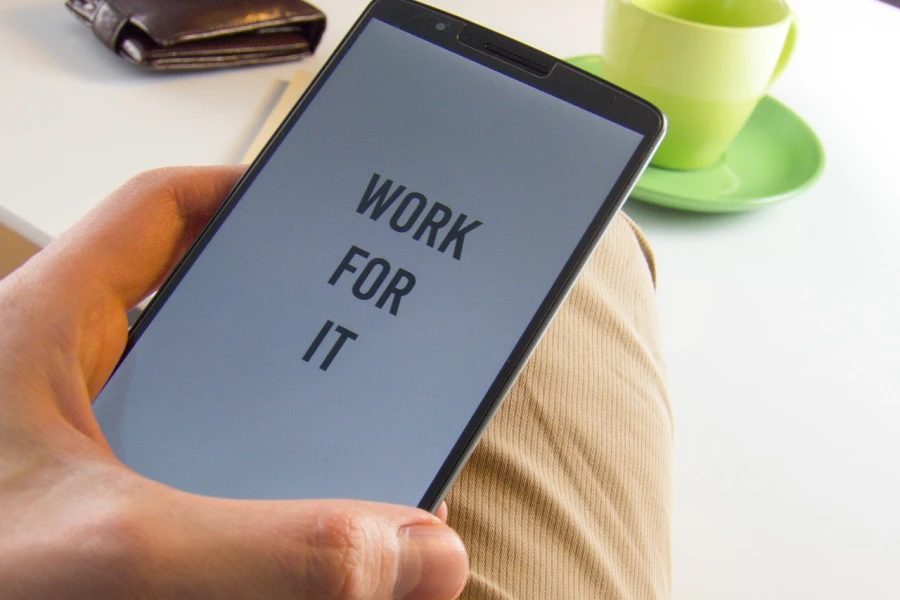
In an era of fast decisions and constant noise, grounding the mind becomes essential. That’s where motivational quotes for positive thinking serve as powerful recalibration tools. These quotes are more than just pretty words. They are distilled wisdom, forged in the fires of perseverance and aligned thinking. Each quote acts as a reminder to elevate above temporary setbacks. By focusing attention on positivity, the mind begins to attract more aligned outcomes.
This is not a matter of blind optimism, but of strategic redirection. The ability to channel energy into empowered beliefs opens doors previously unseen. Quotes allow a recalibration to occur instantly, no matter how intense the day feels. One framed quote on the desk can act like a compass — pointing the mind toward excellence, even when fatigue creeps in.
Items like the Time Is Money wall art are examples of silent motivators. They speak directly to the part of the self that thrives under clarity and high standards. Positive thinking doesn't erase obstacles — it reorganizes their meaning. When belief shifts, the outcome often does too. For leaders, creators, and visionaries, quotes are the alignment fuel for staying in their highest lane.

Every high-impact leader understands the energetic cost of negative thought spirals. Maintaining forward momentum takes intention, and motivational quotes for positive thinking are an accessible yet profound anchor. Great CEOs often curate collections of quotes to revisit during moments of decision. Such moments — though fleeting — shape the long game.
Consider the mental reset that happens while reading affirming words like “Discipline is freedom” or “Energy flows where focus goes.” These are not clichés. These are mental algorithms that reroute unproductive loops into clarity. Thought leaders often build environments designed to echo their core mantras. That’s why items like the Stronger Every Day t-shirt are popular among conscious entrepreneurs. Wearing a statement that affirms growth creates coherence between identity and intention.
When inner and outer alignment occurs, productivity doesn’t require hustle — it becomes magnetic. Positive quotes are like affirmations coded for expansion, especially when encountered repeatedly throughout the day. Whether through wall art, clothing, or screen backgrounds, they influence the trajectory of thought and, consequently, action.
Creating a daily ritual that includes motivational quotes for positive thinking can elevate clarity, focus, and self-leadership. Rituals create rhythm, and rhythm creates reliability. Leaders often begin their mornings with high-vibration practices — reading a quote, journaling its relevance, then embodying it throughout the day.
One effective tool to support this is the daily pink affirmation calendar, which provides a new quote every morning. This ensures that fresh mental inputs shape the energetic tone for the next 24 hours. The most potent results arise when the quote isn’t just read, but also integrated. Try pairing the quote with a question such as, “How can I live this truth today?”
Over time, these practices build a fortified mindset. Challenges no longer feel disruptive — they feel like training opportunities. As the mind adjusts to expect insight from quotes, it becomes increasingly solution-focused. The practice works best when done consistently and with intentionality. Use quotes as prompts to reframe problems into possibilities and watch how productivity naturally expands.

Stress is inevitable, but chaos is optional. In high-stakes business spaces, motivational quotes for positive thinking serve as real-time mindset interventions. When deadlines stack and emotions rise, a single well-placed quote can create an emotional pivot. This is not just emotional fluff — it’s cognitive strategy.
One executive kept a printed Billy Connolly rules poster behind her desk. Whenever conflict surfaced, she’d silently read it to reconnect with grounded perspective. The poster wasn’t decoration; it was her daily recalibration tool.
Quotes embedded in the workspace remind leaders of who they are under pressure. For teams, these artifacts can become cultural anchors — reminders of shared values and resilience. As stress threatens clarity, quotes act like guiding lights. They invite a pause, a breath, and a return to empowered focus. Leaders who embed quotes into their workflows often report improved team morale, clearer communication, and more creative problem-solving. Stress may be loud, but truth is louder when visually reinforced.
Humans are visual beings. Surrounding the self with empowering imagery enhances the retention of motivational quotes for positive thinking. This is why modern office design trends now incorporate neon signage and statement art. These aren’t aesthetic choices alone — they are strategic mood-setters. Items like a motivational neon sign found online do more than glow; they broadcast energy.
When positivity is embedded into the environment, it becomes the default vibration. Leaders who curate their surroundings intentionally often experience faster decision-making and reduced anxiety. Place affirming visuals in transitional zones — above doorways, on monitors, or near mirrors. Each glance becomes an affirmation. These cues act as micro-reminders to stay elevated.
Visual saturation helps the subconscious register these quotes as truths, not aspirations. This kind of subliminal repetition deepens belief. Over time, the inner dialogue becomes more constructive, less reactive. Visual integration of quotes is not just trend — it’s transformation. Done consistently, it builds an environment where success becomes the most natural expression.
Successful individuals do not compartmentalize values — they embody them across personal style, language, and business. Motivational quotes for positive thinking become personal mantras that ripple into brand culture. Think of entrepreneurs who wear their philosophy — literally.
A t-shirt with a motivational quote is not just clothing; it’s brand alignment. Each time it’s worn, the message is reaffirmed to self and others. Brand isn’t logos and color palettes alone — its energy. When positivity becomes visible, it attracts like-minded collaborators, clients, and opportunities.
Aligning with quotes also creates a cohesive personal narrative. People remember the messages that leaders carry, especially when repeated with integrity. Whether displayed on websites, products, or worn in daily life, these affirmations signal coherence. And coherence breeds trust. In a noisy market, clarity stands out. Wearing or displaying a quote isn’t about aesthetics — it’s about energetic congruence. When thoughts, words, and visuals align, results accelerate without force. Leadership then becomes less about persuasion and more about resonance.

The landscape of positive thinking is evolving. Motivational quotes for positive thinking are now entering the realm of tech-assisted well-being. AI platforms that deliver tailored quotes based on mood tracking are on the rise. These tools identify patterns and offer reframing prompts in real-time. It’s like having a mindset coach in the pocket.
Meanwhile, apps and smart mirrors are beginning to integrate personalized quote displays. Imagine starting each day with a reflection that tells you exactly what you need to hear.
Micro affirmations — short, repeated phrases based on quotes — are also gaining popularity. These are less about inspiration and more about reprogramming. As attention spans shrink, these bite-sized truths are proving more effective in building new neural pathways. The shift is clear: quotes are no longer static — they are dynamic elements in mental fitness. Entrepreneurs who leverage these tools report higher clarity, faster recovery from setbacks, and deeper focus. When mindset becomes systematized, excellence becomes consistent. That’s the power of conscious repetition rooted in timeless wisdom.
Motivational quotes for positive thinking are more than inspiration — they reflect the inner qualities that already exist but may need activation. Each quote offers a moment of pause, a mirror that reflects back courage, resilience, and faith. These micro-moments of reflection often reveal where limiting beliefs are still hiding. With consistency, quotes act like chisels, gently removing mental patterns that no longer serve. Leaders who interact with quotes regularly often find that their decision-making becomes more intuitive. This is because repeated exposure to empowering language strengthens the neural connections associated with self-trust.
Over time, the words start becoming lived truths. The result is not just a more positive outlook but a more integrated leadership presence. The inner critic quiets down, making space for clarity and alignment. Using quotes in this way requires intentionality, but the payoff is exponential. Confidence stops being situational and instead becomes structural — embedded deep within one's belief system. This is the true currency of spiritual leadership in modern business.

Language shapes culture, and motivational quotes for positive thinking can subtly but powerfully shape environments. In businesses that thrive on purpose and vision, shared phrases become cultural glue. Repeating quotes during meetings, embedding them in emails, or using them as weekly themes strengthens team cohesion. These shared affirmations create a rhythm of excellence that everyone begins to internalize. Over time, teams that operate with quote-based affirmations develop greater emotional resilience. They communicate more clearly, hold space for challenges, and pursue solutions without collapsing under pressure.
Leaders who embed positive language into their culture often find that creativity flows more freely. When the emotional climate is elevated, innovation naturally follows. The practice of repetition trains the team to reframe setbacks into lessons. Rather than react, they respond — with presence, clarity, and intention. In this way, quotes move from the page into the heartbeat of an organization. They become the silent yet steady current that carries people toward a shared vision of expansion.
Top picks just for you